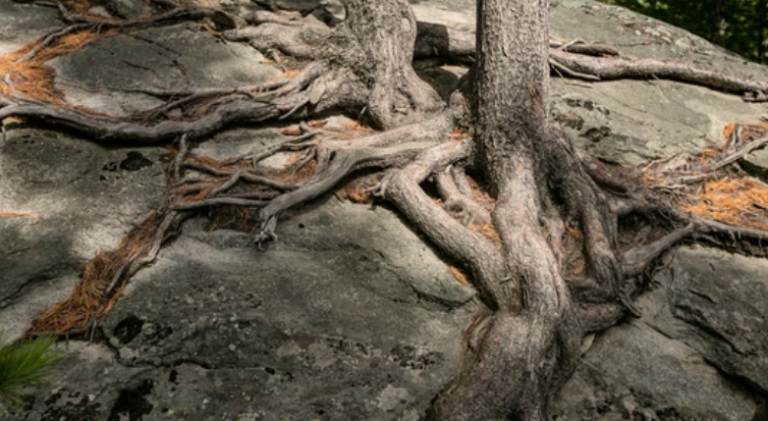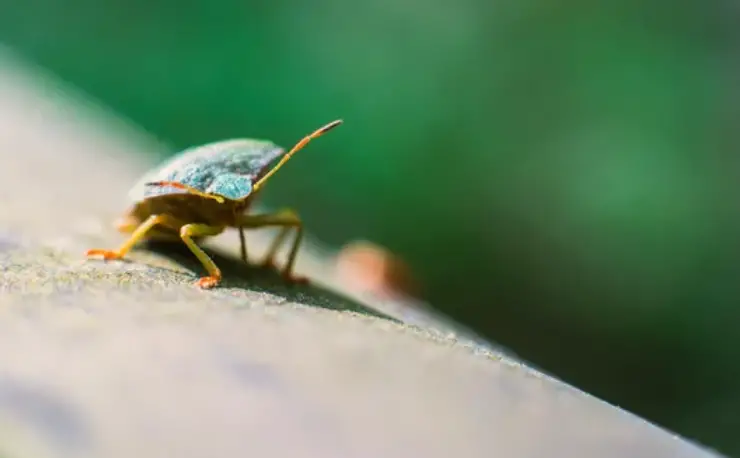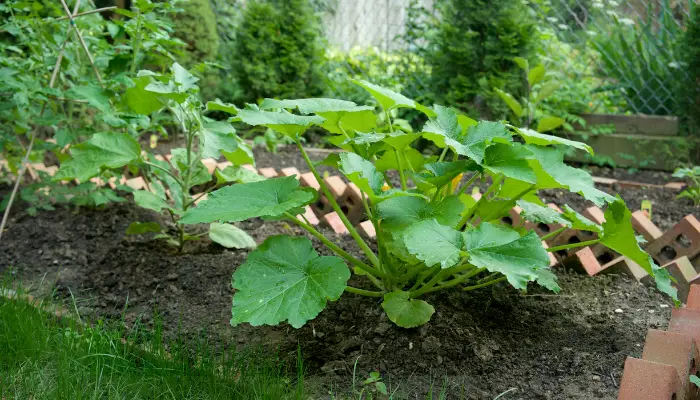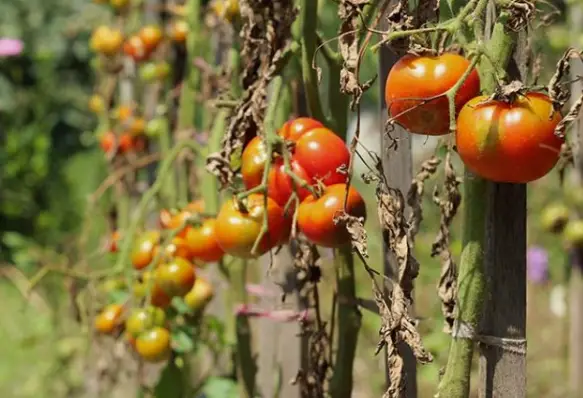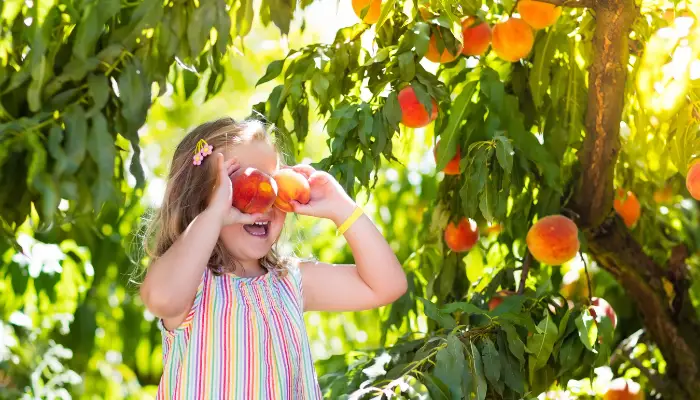When Does Basil Grow: A Guide to Basil Growth and Harvesting
When Does Basil Grow?
Are you interested in growing basil but not sure when to start? Basil is a popular herb used in many dishes, and it’s easy to grow in your garden or even in a pot on your windowsill. Knowing when basil grows best is important to ensure a successful harvest.
Basil is a warm-weather herb that thrives in temperatures between 70-80°F. In most regions, basil is an annual plant that grows from late spring to early fall. If you live in a colder climate, you can still grow basil indoors during the winter months. Basil seeds can be started indoors about six weeks before the last spring frost, and then transplanted outside once the weather warms up.
To ensure a healthy basil plant, it’s important to provide it with well-draining soil, plenty of sunlight, and regular watering. Basil is a versatile herb that can be used in many dishes, including pasta, salads, and even cocktails. With a little bit of knowledge and care, you can enjoy fresh basil all year round.

What Are Basil Plants?
Basil is a popular herb that is known for its fragrant aroma and its versatility in the kitchen. It is a member of the mint family and is native to tropical regions of central Africa and southeast Asia. Basil is an annual plant, which means that it completes its life cycle within one growing season.
There are many different varieties of basil, each with its unique flavor and appearance. Some of the most popular varieties include sweet basil, Thai basil, lemon basil, and holy basil. Sweet basil is the most commonly grown variety and is often used in Italian cuisine. Thai basil has a more licorice-like flavor and is a staple in many Thai dishes. Lemon basil, as the name suggests, has a citrusy flavor and aroma, while holy basil has a spicy, clove-like taste.
Basil is a relatively easy herb to grow, and it can be grown both indoors and outdoors. It prefers warm temperatures and plenty of sunlight, so it is best grown during the summer months. Basil can be grown from seed or from cuttings, and it can be harvested throughout the growing season.
When growing basil, it is important to keep the soil moist but not waterlogged. Overwatering can lead to root rot, which can kill the plant. Additionally, basil should be fertilized regularly to promote healthy growth.
In general, basil takes about 60 to 90 days to mature, depending on the variety. It typically grows to be about 24 inches tall and has large, fragrant leaves. Basil can be harvested by pinching off the leaves as needed throughout the growing season. It is best to harvest basil in the morning when the oils in the leaves are the most concentrated.
Basil Growth Cycle

Growing basil requires patience and attention to detail. Understanding the growth cycle of basil will help you to ensure that your plant grows well and produces a bountiful harvest. The basil growth cycle can be divided into three stages: germination period, maturity stage, and harvesting time.
Germination Period
The germination period is the first stage of the basil growth cycle. It begins when you plant the seeds and ends when the seedlings emerge from the soil. During this stage, the seeds need to be kept warm and moist. You can start the seeds indoors or outdoors, depending on the climate in your area.
If you start the seeds indoors, you should do so about six weeks before the last frost date in your area. Plant the seeds in a seed-starting mix, and keep the soil moist but not wet. Once the seedlings emerge, you can move them to a sunny window or under grow lights.
If you start the seeds outdoors, you should wait until the soil has warmed up to at least 70°F. Plant the seeds about ¼ inch deep in well-draining soil. Keep the soil moist but not wet, and cover the area with a plastic sheet to help retain moisture.
Maturity Stage
The maturity stage is the second stage of the basil growth cycle. It begins when the seedlings have grown to about 6 inches tall and have developed their first set of true leaves. During this stage, the basil plant will grow rapidly and produce more leaves.
To encourage healthy growth, you should water the plant regularly and fertilize it every two weeks with a balanced fertilizer. You should also pinch off the top sets of leaves to prevent the plant from blooming too early.
Harvesting Time
The harvesting time is the final stage of the basil growth cycle. It begins when the plant has grown to its full size and is producing a lot of leaves. You can start harvesting the leaves when the plant is about 6 to 8 inches tall.
To harvest the leaves, simply pinch them off with your fingers or use a pair of scissors. Be sure to leave some leaves on the plant so that it can continue to grow and produce more leaves.
In conclusion, understanding the basil growth cycle is essential for growing healthy and productive plants. By following these guidelines, you can ensure that your basil plant grows well and produces a bountiful harvest.
Optimal Conditions for Basil Growth

If you want to grow healthy and flavorful basil, it’s important to provide the right growing conditions. Here are the optimal conditions for basil growth:
Climate Requirements
Basil is a warm-weather crop that thrives in temperatures between 70 and 95 degrees Fahrenheit. It can grow in both humid and dry climates, but it doesn’t tolerate frost or extreme heat. If you live in a cooler climate, you can grow basil indoors or in a greenhouse. If you live in a hot climate, plant basil in a spot that gets morning sun and afternoon shade.
Soil Preferences
Basil grows best in well-draining soil that is rich in organic matter. The ideal soil pH for basil is between 6.0 and 7.5. You can improve the soil by adding compost, aged manure, or other organic matter. Basil can also be grown in containers, but make sure the potting soil is well-draining and has plenty of nutrients.
Watering Needs
Basil needs consistent moisture to grow well, but it doesn’t like to be waterlogged. Water the plants deeply once or twice a week, depending on the weather and soil conditions. Make sure the soil is moist but not saturated. Avoid getting water on the leaves, as this can promote fungal diseases. Mulching around the plants can help retain moisture and suppress weeds.
By providing the right climate, soil, and watering conditions, you can grow healthy and productive basil plants. With a little care and attention, you can enjoy fresh basil all season long.
Common Challenges in Growing Basil
Growing basil is relatively easy, but it’s not without its challenges. Here are some common issues you may encounter when growing basil and how to deal with them.
Pests and Diseases
Basil is susceptible to several pests and diseases that can damage or kill the plant. Some of the most common pests that attack basil include aphids, spider mites, and whiteflies. You can control these pests by using insecticidal soap or neem oil.
Diseases such as downy mildew, fusarium wilt, and root rot can also affect basil plants. To prevent these diseases, make sure you plant your basil in well-draining soil and avoid overwatering. If you notice any signs of disease, remove the affected leaves or plants to prevent the spread of the disease.
Over or Under Watering
Basil plants require consistent moisture, but overwatering or underwatering can harm the plant. Overwatering can lead to root rot, while underwatering can cause the leaves to wilt and turn yellow.
To avoid overwatering, make sure your soil drains well and don’t water your basil too frequently. To prevent underwatering, check the soil moisture regularly and water your basil when the top inch of soil feels dry to the touch.
Inadequate Sunlight
Basil plants require at least 6 hours of direct sunlight per day to thrive. If your basil isn’t getting enough sunlight, it may become leggy and produce fewer leaves.
To ensure your basil gets enough sunlight, plant it in a location that receives plenty of direct sunlight throughout the day. If you’re growing basil indoors, place it near a south-facing window or use grow lights to supplement natural light.
Basil Varieties and Their Growth Patterns
Basil is a popular herb that is easy to grow and has a wide range of uses in the kitchen. There are many different types of basil, each with their own unique flavor and growth patterns.
Here are some of the most common basil varieties and their growth patterns:
- Sweet Basil: This is the most popular variety of basil and is commonly used in Italian dishes. Sweet basil grows to be about 2-3 feet tall and has large, bright green leaves.
- Genovese Basil: This is a type of sweet basil that is commonly used in pesto. Genovese basil has a strong, sweet flavor and grows to be about 2 feet tall.
- Lemon Basil: This variety of basil has a citrusy flavor and is often used in Thai and Vietnamese cuisine. Lemon basil grows to be about 2 feet tall and has small, light green leaves.
- Thai Basil: This type of basil has a spicy, anise-like flavor and is often used in Thai and Vietnamese dishes. Thai basil grows to be about 2 feet tall and has purple stems and small, dark green leaves.
- Purple Basil: This variety of basil has a slightly spicy flavor and is often used for decorative purposes. Purple basil grows to be about 2 feet tall and has deep purple leaves.
When growing basil, it is important to keep in mind that different varieties have different growth patterns and requirements. Some basil varieties, like sweet basil and Genovese basil, prefer full sun and well-draining soil. Other varieties, like Thai basil and lemon basil, prefer partial shade and moist soil.
In general, basil is a warm weather herb that thrives in temperatures between 70-90 degrees Fahrenheit. Basil can be grown from seeds or transplants and should be planted after the last frost in spring. With proper care and attention, basil plants can grow to be quite large and produce an abundance of flavorful leaves.
How to Encourage Basil Growth
If you want to encourage your basil plants to grow, there are several things you can do. Here are a few tips:
- Provide Adequate Sunlight: Basil plants need plenty of sunlight to grow. Make sure they are planted in a spot that gets at least 6-8 hours of direct sunlight each day.
- Keep the Soil Moist: Basil plants prefer moist soil. Make sure to water them regularly, especially during dry spells. However, be careful not to overwater them, as this can lead to root rot.
- Fertilize Regularly: Basil plants benefit from regular fertilization. You can use a balanced fertilizer or one that is high in nitrogen to encourage leaf growth. Fish emulsion is a good option, as it is high in nitrogen and also provides other nutrients.
- Pinch the Tops: To encourage bushy growth, pinch off the tops of your basil plants when they reach about 6 inches in height. This will encourage the plant to branch out and produce more leaves.
- Harvest Regularly: Regular harvesting can also encourage basil growth. When you harvest the leaves, the plant will produce more to replace them. Be sure to harvest the leaves before the plant flowers, as this can cause the leaves to become bitter.
By following these tips, you can encourage your basil plants to grow and produce plenty of delicious leaves for you to enjoy.
Harvesting and Storing Basil
Basil is a warm-weather herb that grows best in full sun and well-draining soil. It typically takes about 60-90 days from seed to harvest, depending on the variety. Once your basil plant has reached maturity, it’s time to start harvesting and storing your herb.
Harvesting Basil
When it comes to harvesting basil, it’s important to do so correctly to ensure the plant continues to grow and produce more leaves. Here are some tips for harvesting basil:
- Harvest basil in the morning when the leaves are dry and the oil content is at its highest.
- Use a clean, sharp pair of scissors or pruning shears to cut the stems just above a pair of leaves.
- Avoid cutting the stems too close to the base of the plant, as this can damage the plant and reduce future growth.
- Only harvest up to one-third of the plant at a time to avoid stressing the plant.
Storing Basil
Once you’ve harvested your basil, it’s important to store it correctly to ensure it stays fresh and flavorful. Here are some tips for storing basil:
- Rinse the basil leaves in cold water and pat them dry with a paper towel.
- Bundle the basil leaves together and place them in a plastic bag with a damp paper towel. Seal the bag and store it in the refrigerator for up to one week.
- Alternatively, you can freeze basil leaves by placing them in a single layer on a baking sheet and freezing them for a few hours. Once frozen, transfer the leaves to a freezer-safe container or bag and store in the freezer for up to six months.
By following these tips for harvesting and storing your basil, you’ll be able to enjoy fresh, flavorful basil all season long.
Frequently Asked Questions
When is the best time to plant basil?
Basil is a warm-weather herb that grows best in temperatures between 70-80°F. It is recommended to plant basil after the last frost of the season, usually in mid to late May. If you live in a warmer climate, you can plant basil earlier in the season.
What are the ideal growing conditions for basil?
Basil thrives in well-drained soil that is rich in organic matter. It requires full sun exposure, at least six hours a day. The ideal pH range for basil is between 6.0-7.5.
How often should I water my basil plant?
Basil requires consistent moisture to grow well, but it is important not to overwater it. Water your basil plant once or twice a week, depending on the weather and the soil type. Make sure the soil is moist but not waterlogged.
How long does it take for basil to grow from seed?
Basil seeds take about 10-14 days to germinate, depending on the soil temperature. Once the seeds have sprouted, it takes about 4-6 weeks for the basil plant to grow to size and be ready for transplanting.
Can basil be grown all year round?
Basil is a tender annual herb that does not tolerate frost. However, you can grow basil plants year-round indoors or in a greenhouse, provided they have adequate light and warmth.
What season is best for growing fresh basil?
Basil grows best in warm weather, so the summer season is the best time for growing fresh basil outdoors. In cooler climates, you can extend the growing season by planting basil in containers or using row covers to protect the plants from frost.


